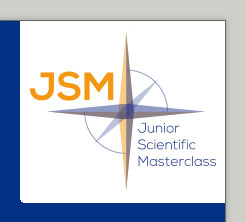Edit researchproject
In this email you'll find a link that you can use to edit the project on the website.
Only researchers that belong to the project can edit their project.
Please use the selectlist below to indicate which researcher you are. When you click the button 'Edit project', an email will be sent to the email of the selected researcher.
Project properties
| Title | Target Antigens in Mucous Membrane Pemphigoid. Evaluation by a combined assay of immunoprecipitation/western blot. |
|---|---|
| Keywords | autoimmune disease autoantigen dermatology |
| Researchers |
dr. H.H. Pas F. Giurdanella |
| Nature of the research | Basic and patient-oriented research |
| Fields of study | dermatology |
| Background / introduction |
|---|
| Mucous membrane pemphigoid (MMP) describes a heterogeneous group of chronic, inflammatory, mucous membrane-dominated, subepithelial blistering diseases that manifest a varying constellation of oral, ocular, skin, genital, nasopharyngeal, esophageal, and laryngeal lesions. Life-threatening airway obstruction and sight-threatening ocular scarring can occur in the patients affected by this condition. Diagnosis is established through the combination of clinical signs and demonstration of IgG and/or IgA and complement fractions deposition along the basement membrane zone (BMZ) by immunofluorescence microscopy on perilesional biopsy. Many epithelial BMZ components have been identified as potential target antigens of MMP. These include bullous pemphigoid antigens 1 and 2 (BPAg1 or BP230 and BPAg2 or BP180), laminin-332 (laminin-5) and laminin-6, type VII collagen, β4 and α6 integrin subunits. Presently, there is no firm correlation between specific clinical phenotypes and target antigens or classes of anti-basement membrane autoantibodies in patients. |
| Research question / problem definition |
|---|
| To date no defined confirmation is given about the target antigens of autoantibodies determining MMP and the correlation of a specific antigen to the clinical phenotype. While several reports confirm the BP180 as the antigen involved more frequently in MMP patients, less is known about other important components of the BMZ, with special regards to the β4α6-integrin complex. QUESTION: Is the β4α6-integrin complex a true antigen targeted by MMP patients’ auto-antibodies? |
| Workplan |
|---|
|
MMP patients’ sera will be tested by a combined assay of non-radioactive IgG immunoprecipitation and Western blot to evaluate auto-antibodies’ reactivity against BP180, β4-integrin and α6-integrin. More in details, IgG from patients’ sera will be isolated by the means of a recombinant Protein G conjugated to agarose beads. Isolated IgG will be used to immunoprecipitate antigens from a lysate obtained from cultured keratynocites. The immunoprecipitation products will be visualized by western blot technique, using monoclonal mouse anti-human antibodies agains BP180, β4-integrin and α6-integrin. To characterize MMP clinical phenotype of our patients and to correlate it to the auto-antibodies reactivity, all patients’ records will be analyzed. The student will play an active role in analyzing the clinical phenotype of the patients through the use of the UMCG clinical database and she/he will also be able to assist the researchers in the laboratory, learning the techniques used in the research. Possibility also to enter the dermatological clinic as an observer along with Prof. Jonkman teamwork and to learn other laboratory techniques (e.g. ELISA, immunofluorescence microscopy) together with experienced laboratory technicians. |
| References |
|---|
|
Chan LS, Ahmed AR, Anhalt GJ, Bernauer W, Cooper KD, Elder MJ, Fine JD, Foster CS, Ghohestani R, Hashimoto T, Hoang-Xuan T, Kirtschig G, Korman NJ,Lightman S, Lozada-Nur F, Marinkovich MP, Mondino BJ, Prost-Squarcioni C, Rogers RS 3rd, Setterfield JF, West DP, Wojnarowska F, Woodley DT, Yancey KB,Zillikens D, Zone JJ. The first international consensus on mucous membrane pemphigoid: definition, diagnostic criteria, pathogenic factors, medical treatment, and prognostic indicators. Arch Dermatol. 2002 Mar;138(3):370-9. Chan LS. Ocular and oral mucous membrane pemphigoid (cicatricial pemphigoid). Clin Dermatol. 2012 Jan-Feb; 30(1):34-7. Di Zenzo G, Carrozzo M, Chan LS. Urban legend series: mucous membrane pemphigoid. Oral Dis. 2014 Jan; 20(1):35-54. |


